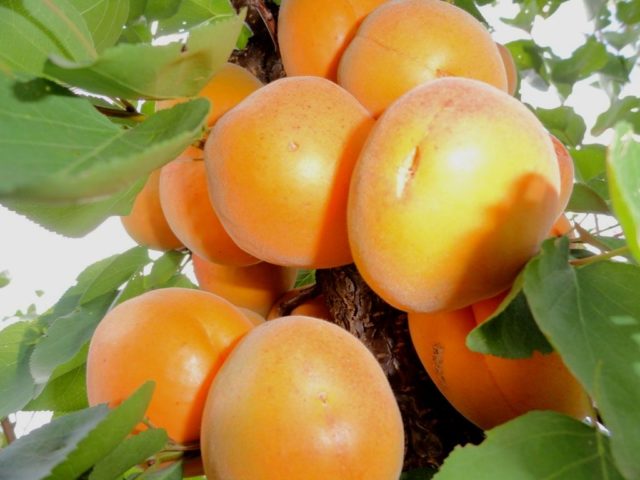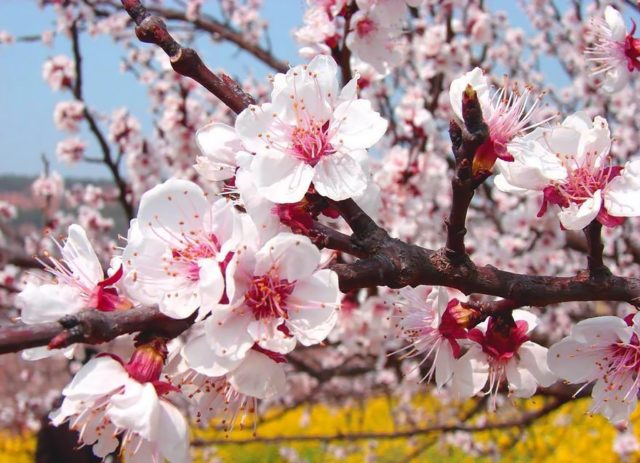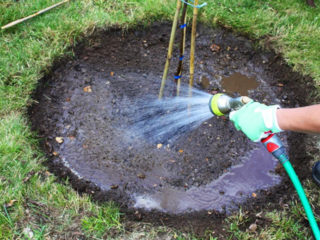Content
In the course of breeding work to create crops suitable for cultivation in the central regions of Russia, the Dessert apricot was created. The result is a winter-hardy, mid-season variety with good taste characteristics. If all agricultural technology conditions are met, the crop produces high yields in the garden plots of central Russia.
History of selection
The author and originator of the variety is the scientist breeder A. N. Venyaminov. Extensive breeding work was carried out in collaboration with L. A. Dolmatova. The Dessert variety was obtained at the Voronezh Agricultural Institute.
The new crop was developed in the process of cross-pollination of the Michurin varieties Tovarishch and Best Michurinsky.The Western European apricot Louise was treated with a mixture of pollen from these plants. The result was a winter-hardy variety with high yield and good taste characteristics. In the photo you can see that the Dessert apricot has large, rounded fruits.
The variety was not included in the State Register of Breeding Achievements of the Russian Federation. Dessert Apricot is recommended to be cultivated in the Central Black Earth regions and in the south.
At the turn of the 70–80s, agronomist A. M. Golubev developed his own variety of apricots based on the Desertny variety. It retained the taste of the original. To avoid confusion, this variety was called Dessert Golubeva.

Apricots thickly cover a branched, fast-growing tree
Description of the Dessert apricot variety
The culture is characterized by strong shoot growth. The crown is thick, voluminous and round in shape. An adult plant grows up to 5 m.
The bark of the trunk and old shoots is brown, and the young branches are brown-red. In old trees, the surface of the trunk cracks. The bark and buds easily tolerate winter and spring frosts.
The leaves are ovoid in shape, with jagged edges. Leaf length ranges from 5 to 9 cm. Petioles are short - up to 3 cm.
The fruits are rounded drupes, slightly flattened on the sides, their average weight is 30 g. The surface color of the fruit is light yellow, the color of the pulp is reddish.

The lateral surface of the Dessert fruit becomes red-orange during ripening
Dessert apricot bears fruit 4 years after planting. There are few drupes on young trees, but they are large, their weight can reach up to 50 g. The apricot skin is thin, densely covered with fluff, the flesh is dense and juicy. The dessert taste is sweet, with a slight sourness, and a strong characteristic aroma.
The seed does not exceed 10% of the volume of the entire fruit. At the stage of consumer maturity, it is well separated from the pulp. Fruit ripening occurs at the end of July.
The roots of the tree penetrate 60-100 cm deep into the soil. Some shoots can grow up to 8 m, this is due to the good drought resistance of the Dessert apricot.
In terms of fruit quality, the northern Dessert variety is one of the best, and in taste it is not inferior to popular southern hybrids.
Characteristics
The variety is ideal for growing in the central region. Climatic conditions correspond to its characteristics.
Drought resistance, winter hardiness
Apricot Dessert easily tolerates short-term drought. During hot summers it needs watering.
The Dessert variety is winter-hardy; the bark and buds of the plant can easily withstand temperatures dropping to sub-zero levels.

Young seedlings up to 4 years old need shelter for the winter
Pollinators of apricot Dessert
This is a self-fertile crop and does not require pollinators. But to increase productivity, a winter-hardy mid-season variety is planted nearby, the flowering and fruiting periods of which coincide with the Dessert apricot. Such crops include the following varieties: “Aquarius”, “Countess”, “Monastyrsky”, “Lel”, “Favorit”, “Children’s”.
Flowering period
Depending on the growing region, Dessert apricot blooms in late March or early April before the leaves bloom. In the south, the crop produces buds earlier, in the middle zone - later, in the second half of April. For apricot to bloom, a temperature of at least + 10 ᵒС is required.

The flowers of the Dessert variety are medium-sized, up to 3 cm in diameter, the petals are round, white or pale pink.
The duration of the budding process is 10 days.Pollination at this time occurs in windy weather.
Ripening time for Dessert apricot
The first Dessert apricot fruits are harvested at the end of July. In the Moscow region, southern tree drupes can be eaten in early August. The ripening period is extended, the harvest is harvested within a month.
Productivity, fruiting
Dessert apricot is classified as a productive variety. Over the entire fruiting period, up to 3 buckets of fruit are harvested from one tree, which is approximately 45 kg of harvest.
Area of application of fruits
Dessert apricot is consumed fresh and processed. It is suitable for making jams, preserves, and soufflés. The taste of ripe fruits is well revealed in compotes and fruit drinks; dessert apricots are also suitable for winter preparations and the preparation of dried fruits.
Resistance to diseases and pests
The variety is resistant to many garden pests and diseases. To prevent fungal infections, the tree is treated with fungicides in early spring. Timely pruning and removal of plant debris is a good prevention of leaf rollers, aphids, and plum moths.
Advantages and disadvantages
The variety has practically no disadvantages. The only disadvantage is the poor fruiting of the Dessert apricot in regions with a very warm climate.
Advantages of the variety:
- self-fertility;
- resistance to drought, frost, diseases;
- high productivity;
- good taste of the fruit.
Dessert Apricot has good product characteristics: it does not spoil during transportation and can be stored in a cool room for up to 14 days.
Landing Features
To plant Dessert apricot, purchase seedlings that are at least 2 years old. It is also possible to grow a culture from a seed, but with this method the taste of the fruit is significantly reduced.
Recommended timing
The seedling is rooted in open ground in early April. If the air has not warmed up to above-zero temperatures, planting can be postponed to the second half of the month.

Rooting of young trees in the spring is carried out before the buds on the branches peck.
Choosing a suitable location
For a young tree of the Dessert variety, choose a well-lit place on the south side of the site. The seedling must be protected from the wind; the tree should not be placed in a low area where moisture accumulates.
The soil is loosened; the plant will not take root on dense, compacted soil. Loams, sandy loams, and garden soil with humus are suitable for planting.
What crops can and cannot be planted next to apricots?
Dessert Apricot is planted next to other representatives of the species. The plant produces a high yield if the flowering and fruiting periods of other apricot varieties coincide with its own.
It is not recommended to plant apple, plum, or pear trees next to apricots - these crops have common pests and elements consumed from the soil. It is also not recommended to plant Dessert apricot next to walnuts; under its dense crown the garden crop does not bear fruit.
Selection and preparation of planting material
It is better to purchase planting material from a nursery. Seedlings older than 2 years old, grown in similar climatic conditions to the planting site, take root well. The tree should be strong, with an even trunk and well-developed rhizome.
Seedlings with a closed root system are planted in containers. Trees with an open rhizome are soaked in a root formation stimulator for 10 hours.
Landing algorithm
It is better to prepare planting holes in the fall. The mass of earth extracted during digging is mixed with humus in equal parts.If it was not possible to prepare the site in the fall, planting is carried out in April.
Sequencing:
- Dig a hole twice the size of the roots.
Root shoots should be freely located in the hole
- Place a drainage layer of crushed stone on the bottom.
- Place a mound of loosened soil on top of the drainage.
- Place the seedling vertically, leveling the roots on the surface of the mound.
- Cover the rhizome with soil mixed with humus so that the root collar is 5 cm above the soil surface.
Before or after rooting, a peg is driven in next to the seedling and the tree is tied to it
Subsequent care of the crop
After planting, the tree is watered with 2 buckets of water. Then the soil surface is mulched with sawdust or wood chips. The rooted seedling is pruned, creating a sparsely tiered crown shape.

In the process of growth in different years, the branches of the tree are cut so that they grow in width and do not stretch upward
From the second year after planting, nitrogen fertilizers are applied at the root. The procedure is carried out in early spring.
Diseases and pests
Despite the fact that Dessert apricot is resistant to diseases, in rare cases it is overcome by cytosporosis. At the first signs of the disease, damaged branches are cut off and burned. Wood is treated with Bordeaux mixture.

Cytosporosis is a dangerous disease that affects individual branches, subsequently the whole tree dries out
During the period of fruit ripening, the plum moth can be seen on the tree. The insect damages ripening apricots, reducing crop yields. Spraying with insecticides will help get rid of the pest.

Codling moth larvae caterpillars feed on the pulp of the drupe, destroying the crop
Conclusion
Dessert apricot is a southern crop, adapted to the climatic conditions of central Russia. The variety is characterized by high yield and good taste characteristics. Caring for the crop is quite simple: watering 2-3 times per season, pruning in spring and autumn, preventive spraying are the main conditions for growing a fruit tree.










